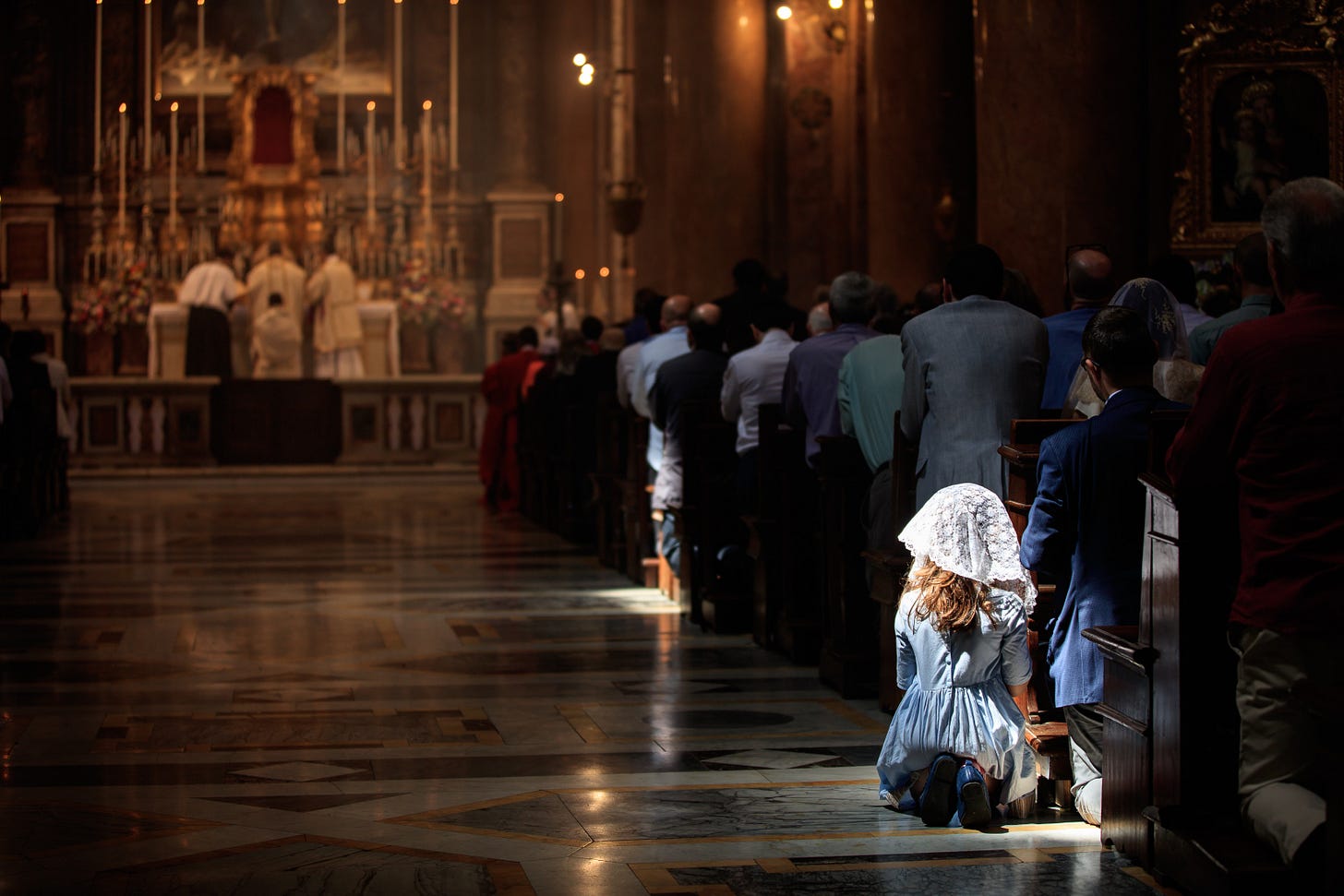Raised in the Fear and Love of God: Why the Traditional Mass Is Good for Children (Part 1)
Our worship shows what we believe, who we are, and where our treasure is
In spite of stability in many places, we have seen in recent months a rash of bishops around the USA aggressively axing the TLM, as if either afraid Pope Leo XIV may reverse Francis’s restrictions or desirous of provoking him to a hasty reaction. In difficult times like these, we need to keep asking ourselves: Why should we move mountains to stick with the traditional Mass, when we might need to travel further, or take refuge at an SSPX chapel, or even move to a different town or state to be part of a flourishing parish run by the Fraternity of St. Peter or the Institute of Christ the King?
One could answer this question in many different ways. Here, I will answer it from the vantage of how the TLM benefits our children.
Faithful Catholics intuitively know just how important it is that Sundays and Holy Days be properly set apart, solemnized with reverent, nourishing, and edifying liturgy. We also know how important is the Holy Sacrifice of the Mass, where we give perfect worship to God through Christ, and receive His most holy Body as the food of eternal life. We have a duty to seek out right worship for ourselves, but, more to the point, we have a duty to seek it out for our children. Once children are part of our lives, we need to think more carefully about the liturgy we attend week in, week out.
Parents are the primary ones responsible for the spiritual formation of their children. This is not something that can be “outsourced” to clergy, CCD volunteers, or parochial teachers. No matter how much instruction children are getting from the outside, it is not likely to be enough, and it may not even be right. We need to ensure that the faith of children is fed from pure, uncontaminated sources; that their hope is channeled toward heaven; that their charity is enkindled by the sight of loving homage being paid to the Divine Lover and by the sight of other devout believers placing God first.
Good catechesis and good liturgy are both necessary because they reinforce one another. However, the “atmosphere” of prayer and reverence in which children grow up, treating holy things in a holy way, is much more decisive than the catechesis they receive. What is needed most is a form of worship and a Catholic community that confirm and illustrate what the catechism is saying. In that sense, I would maintain that family catechesis begins with the family gathered in the church, kneeling, and praying at Mass, and only afterwards has an academic or intellectual component. It begins with the heart and later brings in the mind.
Lex orandi, lex credendi, lex vivendi. How we pray shows, and shapes, what we believe; these, in turn, shape our way of life in their image. What faith do we profess, and how do we live our lives as Catholics? Look to the liturgy and it will tell you.
Keep reading with a 7-day free trial
Subscribe to Tradition and Sanity to keep reading this post and get 7 days of free access to the full post archives.



